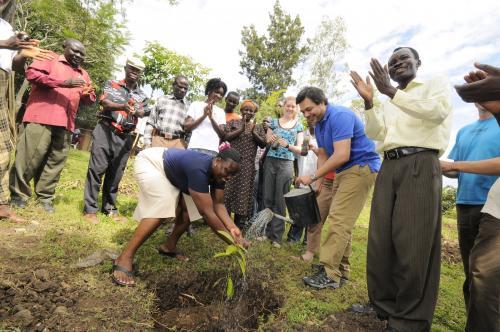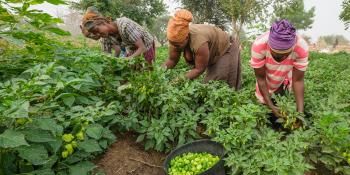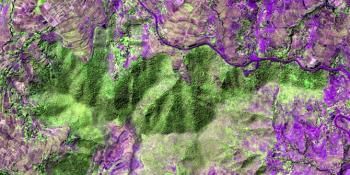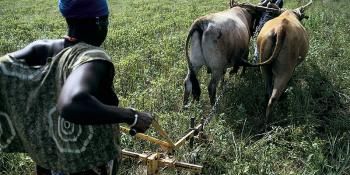Nyando’s Army of Madmen
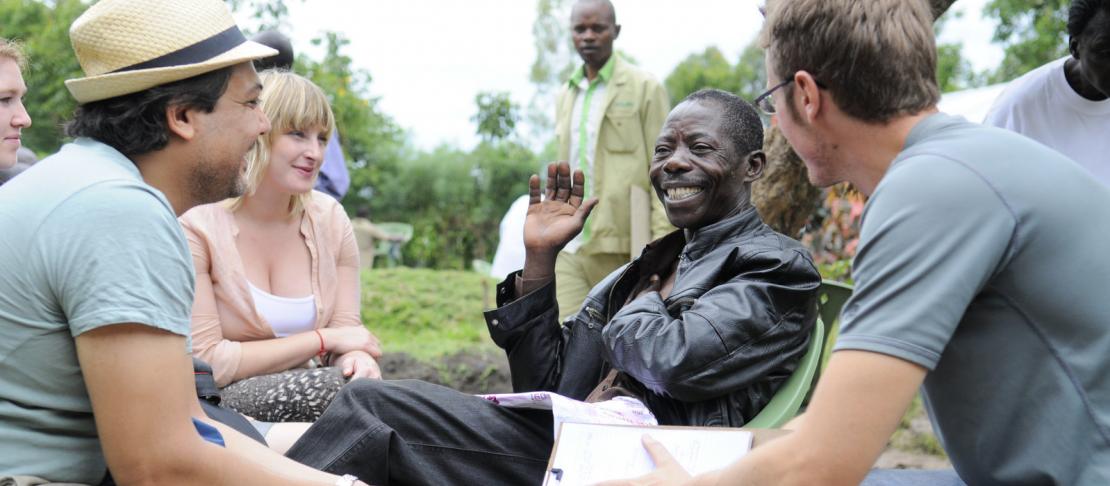
Guest Blog by: Chase Sova, visiting researcher on 'Adaptive Capacity under Progressive Climate Change', CCAFS.
A few weeks ago the International Center for Tropical Agriculture (CIAT) and CCAFS published a blogpost on Maurice Kwadha (affectionately known as “Maurice the Madman”), an innovative small-scale farmer in Kenya’s Nyando Basin. The post was entitled “Kenya: A glimpse of climate-smart agriculture” quickly went viral and was picked up by Reuters Alertnet. As we get closer to Durban, we thought this to be the ideal time to share more on Maurice and the organizations in the Nyando Basin that have helped to make him and others so successful.
Sub-Saharan Africa more vulnerable than other continents to climate change
Sub-saharan Africa is recognized as highly vulnerable to climate change impacts due to its high levels of poverty and relatively low adaptive capacity. East Africa in particular, where you’ll find Maurice’s farm, is identified as a hotspot for change. He and his neighbors in the Nyando Basin in Western Kenya are already beginning to see the impacts of unpredictable rainfall and increased drought and flood intensity. The task of planning yearly activities has grown increasingly difficult, often resulting in significant crop losses. The consequences on food security are predictably devastating. But Maurice’s story is not one of hunger and despair. Quite the contrary, it’s one of hope. In a region with no shortage of environmental challenges people like Maurice are not only competing with climate change, they’re flat-out beating it.
We first met Maurice when organizing a community workshop in Kochiel, Kenya for the CCAFS community based adaptation planning and costing initiative (SROI). We asked our local partner to help us bring together a community to participate. There was only one call to make, and it was to Maurice. As a leader, innovator and entrepreneur Maurice had no trouble assembling 40 of his neighbors. One visit to his farm and it’s no wonder that his call to participate was so convincing.
Even if there is no rain, Maurice can survive
Maurice’s one acre plot is home to a wide range of crops and management practices. It’s diversity at its best, with maize, papaya, beans, cowpeas and several varieties of fruit trees all within meters of one another. His farm is a true showcase for sustainable agriculture, highlighted by a composting area, hybrid dairy cow, hand-dug pond for water collection (which he pumps from a seasonal river near his property), and an EcoSans composting toilet. Maurice is also avidly practicing agroforestry. Interspersed within his crops are a variety of short and long-term trees. They help to ensure water retention, provide fodder for his cow, serve as wind blocks to limit topsoil erosion and, in a few years’ time, will provide Maurice with firewood and fencing/building poles. “Some 15-20 years back it was easy for us as farmers to program our duties hoping that the rain would come, but nowadays you cannot do that, it changes everything”, says Maurice. “But [because of training on water management and diversification] I can survive, and all of my activities can go well, even if there is no rain”.
The good news for Maurice and his neighbors is that his success story is not entirely unique. Maurice operates his farm in an increasingly innovative environment in Kenya’s Nyando Basin. Kochiel is one of many villages participating in Africa’s first soil carbon project operated by the Swedish NGO SCC-ViAgroforestry (ViA) in cooperation with the World Bank and the Kenyan Government. ViA’s goal is to aggregate the mitigating practices of small-scale farmers to increase the region’s carbon sequestration potential and to tap into voluntary carbon markets. The program is in its second year, but aims to expand to 60,000 farmers by 2019, adding to an already strong case for agriculture’s entry into the Clean Development Mechanism (CDM). While carbon payments and revenue distribution for the region’s farmers will be initially small, the sustainable agricultural and land management (SALM) practices promoted by the project have led to valuable co-benefits (yield increases, livelihood diversification etc), many of which are on display throughout the region.
CARE International, another well-established NGO in Nyando is building on both the success of ViA and their own ‘Agrolife’ program, an initiative that pioneered a low-cost agroforestry extension network-based mostly of community volunteers. Using this already strong network, CARE has partnered with the Rockefeller Foundation, CCAFS, and the World Agroforestry Centre (ICRAF) to provide farmers in the Nyando basin with training and seedlings to introduce agroforestry and woodlot management practices. Their message is well coordinated with that of ViA, and will add another 75,000 – 100,000 farmers over the next 15 years to its own carbon program. Together, CARE and ViA are amassing an army of climate-smart farmers in the Nyando basin. Maurice and others like him are leading the charge.
Sustainable agriculture as a great source of income
While Maurice is certainly a testament to the value of agroforestry co-benefits, his farm has also evolved into a key resource in promoting sustainable, climate-smart agriculture. Its undeniable centerpiece: a burgeoning tree nursery. At the time of our first visit in July, Maurice was raising over 20,000 seedlings of local tree species which he and ViA promote for agroforestry practices. His experience in growing the trees from seed to seedling ensures a high success rate when transplanted to farms like his all across the region. At 10- 15 Kenyan Shillings (US$0.10 – US$0.15) a seedling, they offer an affordable and effective way to diversify practices and maximize co-benefits.
Maurice’s careful record-keeping clearly shows the positive impact of the practices he has adopted. He keeps his records book together with a growing stack of certificates and diplomas from various farmer field schools and learning events that he has attended. “This [learning experiences and tree nursery] has changed my life in that I can manage in terms of school fees for my children, and in terms of health services. We have to compete with the world” he says, pointing across the room to a television. “I purchased that T.V. so that every day I can be informed; so that my children get to know what happens”.
While Maurice’s on-farm success is unquestionable, it’s his impact throughout the village of Kochiel that is most inspiring. Through the Which Tiyo youth group, Maurice shares his love for learning and farming with a whole new generation of Kochiel youth. He teaches valuable skills in sustainable agriculture and enterprise, never losing sight of his role in securing a bright future for the Nyando Basin. His life is a practical course in overcoming adversity. In a time when uncertainty and change threaten to destroy livelihoods, Maurice is leading the effort to adapt, to thrive. His, and that of a growing army of madmen like him, is a legacy that has the potential to transform Kenya’s landscape, one acre at a time.
